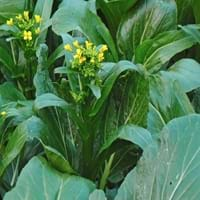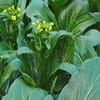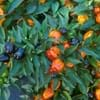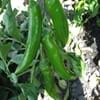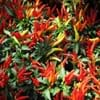Life Span
Annual
Perennial
Type
Vegetable
Flowering Plants
Origin
Europe
Not Available
Types
Not Available
Aconitum napellus
Number of Varieties
Not Available
Habitat
agricultural areas, Moist Soils
Damp shady woods, meadows
USDA Hardiness Zone
4-10
12-15
Sunset Zone
A1, A2, A3, H1, H2, 1a, 1b, 2a, 2b, 3a, 3b, 4, 5, 6, 7, 8, 9, 10, 11, 12, 13, 14, 15, 16, 17, 18, 19, 20, 21, 22, 23, 24
21, 22, 23, 24
Habit
Upright/Erect
Oval or Rounded
Minimum Height
Not Available
Minimum Width
Not Available
Flower Color
Yellow
Yellow
Flower Color Modifier
Bicolor
Not Available
Fruit Color
Sienna, Black
Green
Leaf Color in Spring
Green, Light Green
Not Available
Leaf Color in Summer
White, Green, Dark Green
Not Available
Leaf Color in Fall
White, Green, Dark Green
Not Available
Leaf Color in Winter
White, Green, Dark Green
Not Available
Plant Season
Spring, Fall, Winter
Not Available
Sunlight
Full Sun, Partial Sun
Not Available
Growth Rate
Fast
Very Slow
Type of Soil
Clay, Loam, Sand
Not Available
The pH of Soil
Acidic, Neutral
Not Available
Soil Drainage
Well drained
Not Available
Bloom Time
Spring, Summer
Spring
Repeat Bloomer
No
Not Available
Tolerances
Drought
Not Available
Where to Plant?
Container, Ground
Ground
How to Plant?
Seedlings
reseeds
Plant Maintenance
Medium
Medium
Watering Requirements
Allow to dry out slightly between watering, Do not water the foliage, Keep the Soil well drained
Do not let dry out between waterings
In Summer
Lots of watering
Lots of watering
In Spring
Moderate
Moderate
In Winter
Average Water
Average Water
Soil pH
Acidic, Neutral
Not Available
Soil Type
Clay, Loam, Sand
Not Available
Soil Drainage Capacity
Well drained
Not Available
Sun Exposure
Full Sun, Partial Sun
Not Available
Pruning
Remove dead or diseased plant parts
Remove damaged leaves, Remove dead branches, Remove dead leaves
Fertilizers
8-8-8, since leafy plants, use higher nitrogen content fertilizer
All-Purpose Liquid Fertilizer
Pests and Diseases
Aphids, Beetles, Cabbage looper, Downy mildew, Fusarium leaf spot, Rust
Red blotch
Plant Tolerance
Full Sun, Humidity, Shallow soil
Drought
Flowers
Showy
Not Available
Flower Petal Number
Single
Single
Fragrant Flower
No
Not Available
Fragrant Fruit
No
Not Available
Fragrant Leaf
Yes
Not Available
Fragrant Bark/Stem
No
Not Available
Showy Foliage
Yes
Not Available
Showy Bark
No
Not Available
Foliage Texture
Medium
Bold
Foliage Sheen
Not Available
Not Available
Invasive
Sometimes
Not Available
Self-Sowing
Yes
Not Available
Attracts
Caterpillar, Mites
Hummingbirds
Allergy
Diarrhea, Dizziness, Nausea
poisonous if ingested, Toxic
Aesthetic Uses
Not Available
Not Used For Aesthetic Purpose
Beauty Benefits
Anti-ageing, Hair Conditioner, Skin cleanser
Not Available
Environmental Uses
Fixes Nitrogen, Food for animals
Air purification
Medicinal Uses
Aging, Anti-oxidant, Digestion problems, Eliminate toxins, Nutritive, Obesity, Rich in Potassium
Analgesic, Anodyne, Diaphoretic, Homeopathy, Used as a sedative
Part of Plant Used
Leaf Stalks, Leaves
Root
Other Uses
Culinary use, Sauces, Used to promote healthy blood flow during menstruation
Not Available
Used As Indoor Plant
No
No
Used As Outdoor Plant
Yes
Yes
Garden Design
Container, Edible, Herb / Vegetable, Wildflower
Not Available
Botanical Name
BRASSICA rapa( Chinensis Group)
Aconitum
Common Name
Bok Choy, Chinese Cabbage, Choy Sum, Pak Choi
aconite, monkshood, wolf's bane, leopard's bane, mousebane, women's bane, devil's helmet, Queen of all Poisons, blue rocket
In Hindi
choy sum
बच्छनाभ
In German
choy sum
Eisenhut
In French
choy sum
Queen of all Poisons
In Spanish
choy sum
Queen of all Poisons
In Greek
choy sum
Queen of all Poisons
In Portuguese
choy sum
Queen of all Poisons
In Latin
choy sum
Queen of all Poisons
Phylum
Magnoliophyta
Tracheobionta
Class
Magnoliopsida
Magnoliopsida
Order
Capparales
Ranunculales
Family
Brassicaceae
Cactaceae
Clade
Angiosperms, Monocots
Angiosperms, Eudicots
Tribe
Not Available
Delphinieae
Subfamily
Not Available
Not Available
Properties of Choy Sum and Queen of all Poisons
Wondering what are the properties of Choy Sum and Queen of all Poisons? We provide you with everything About Choy Sum and Queen of all Poisons. Choy Sum doesn't have thorns and Queen of all Poisons doesn't have thorns. Also Choy Sum does not have fragrant flowers. Choy Sum has allergic reactions like Diarrhea, Dizziness and Nausea and Queen of all Poisons has allergic reactions like Diarrhea, Dizziness and Nausea. Compare all the properties and characteristics of these two plants. Find out which of these plant can be used as indoor plant. If you are interested to decorate your house and garden, find out aesthetic uses, compare them and select the plant which will beautify your surrounding. Along with beautification, try comparing medicinal and edible uses of Choy Sum and Queen of all Poisons and you can choose the plant having best and most benefits.
Season and Care of Choy Sum and Queen of all Poisons
Season and care of Choy Sum and Queen of all Poisons is important to know. While considering everything about Choy Sum and Queen of all Poisons Care, growing season is an essential factor. Choy Sum season is Spring, Fall and Winter and Queen of all Poisons season is Spring, Fall and Winter. The type of soil for Choy Sum is Clay, Loam, Sand and for Queen of all Poisons is Not Available while the PH of soil for Choy Sum is Acidic, Neutral and for Queen of all Poisons is Not Available.
Choy Sum and Queen of all Poisons Physical Information
Choy Sum and Queen of all Poisons physical information is very important for comparison. Choy Sum height is 15.20 cm and width 15.70 cm whereas Queen of all Poisons height is Not Available and width Not Available. The color specification of Choy Sum and Queen of all Poisons are as follows:
Choy Sum flower color: Yellow
Choy Sum leaf color: Green, Light Green
Queen of all Poisons flower color: Yellow
- Queen of all Poisons leaf color: Not Available
Care of Choy Sum and Queen of all Poisons
Care of Choy Sum and Queen of all Poisons include pruning, fertilizers, watering etc. Choy Sum pruning is done Remove dead or diseased plant parts and Queen of all Poisons pruning is done Remove damaged leaves, Remove dead branches and Remove dead leaves. In summer Choy Sum needs Lots of watering and in winter, it needs Average Water. Whereas, in summer Queen of all Poisons needs Lots of watering and in winter, it needs Average Water.
